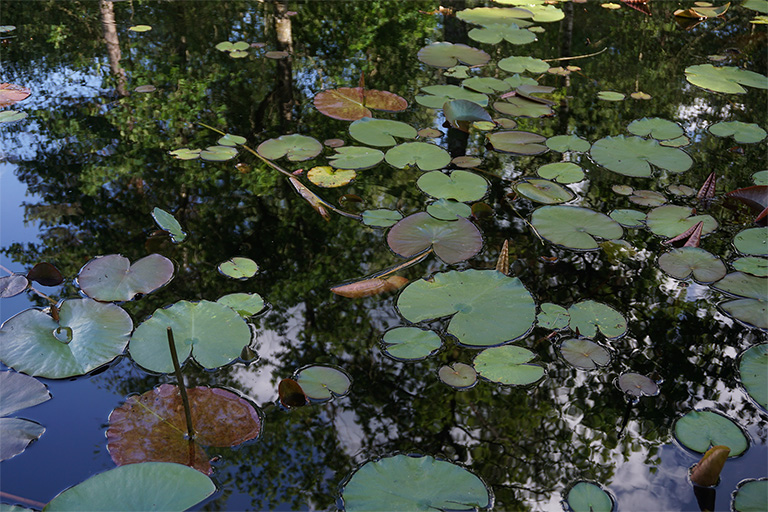
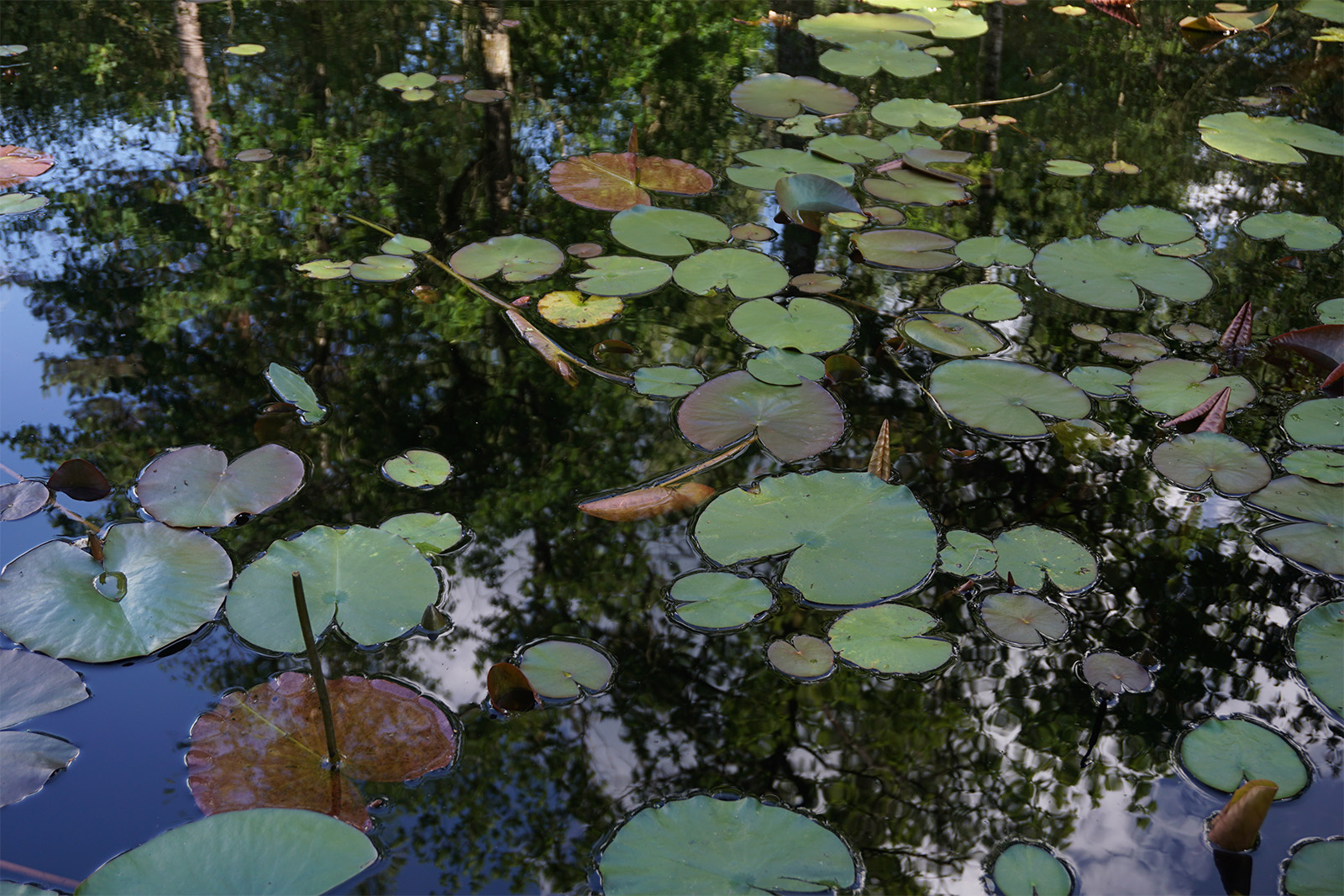
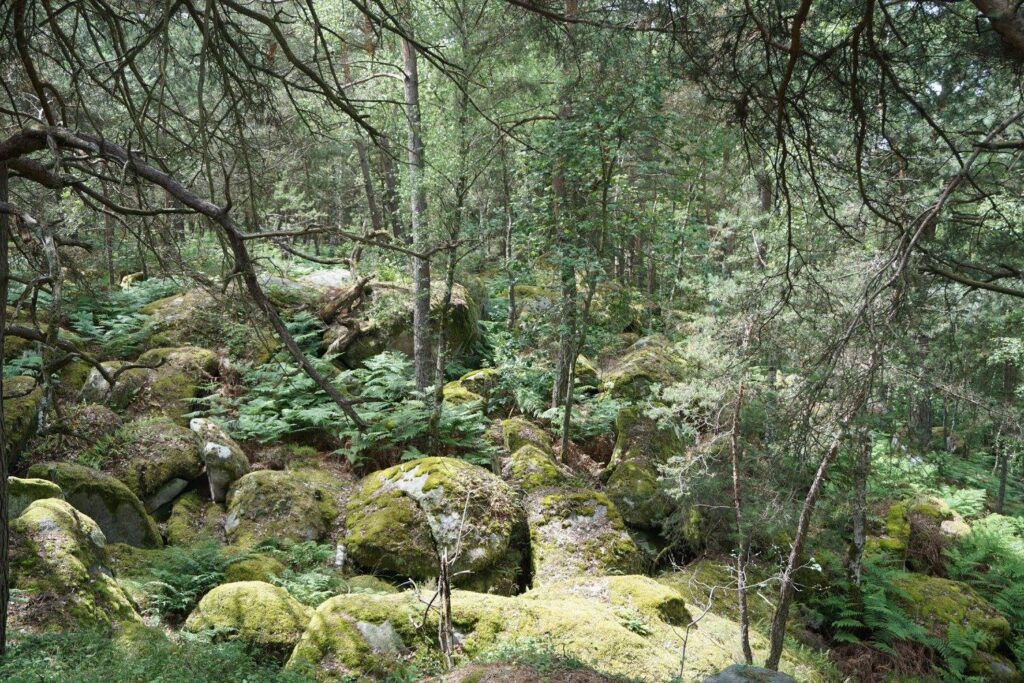
Forest of Fontainebleau, located some 50km south of Paris, is considered to be one of the most beautiful forests in whole of France. With 1600km of trails, it is visited by millions of naturalists and hikers throughout the year. Since the Middle Ages it was king’s personal forest where royalty went hunting. The only thing where Forest of Fontainebleau does not excel is at height since its highest peak is only 144m above the sea level.

The most visited trail starts at town of Fontainebleau, through village Barbizon and continues to Bois-le-Roi. Some parts of it are even too arranged, especially where wooden or stone steps are built. This excessive orderliness is only partial and mostly reserved for the most attractive parts of the forest.
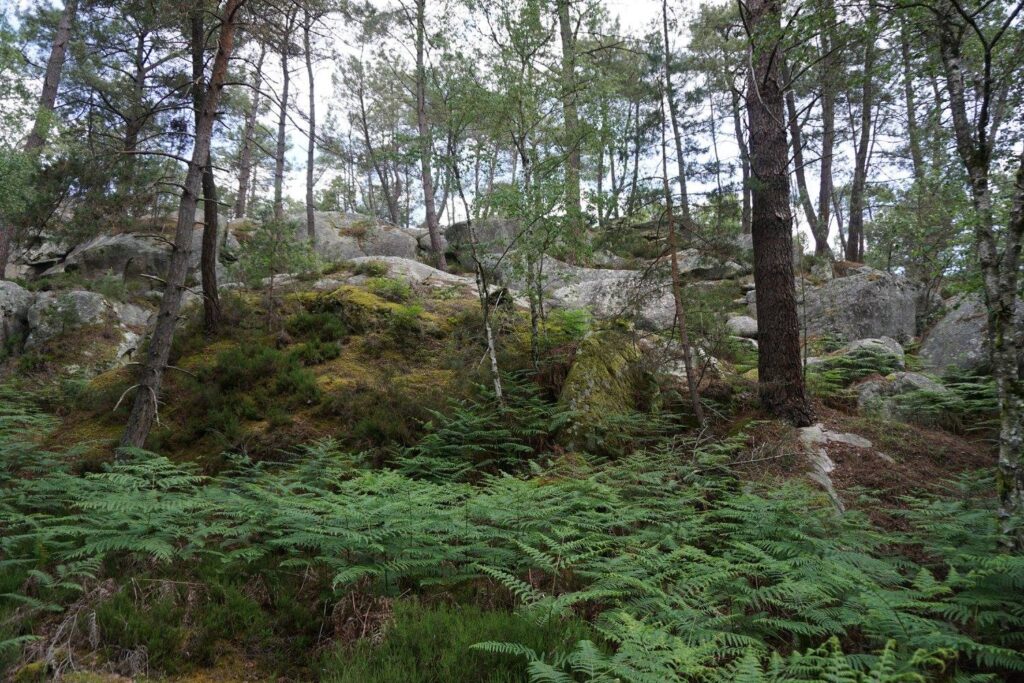
At the start of the trail through Forest of Fontainebleau is a hill of stone blocks ‘’Mont Aigu’’. Translated from French it would be called ‘’Sharp Hill’’.
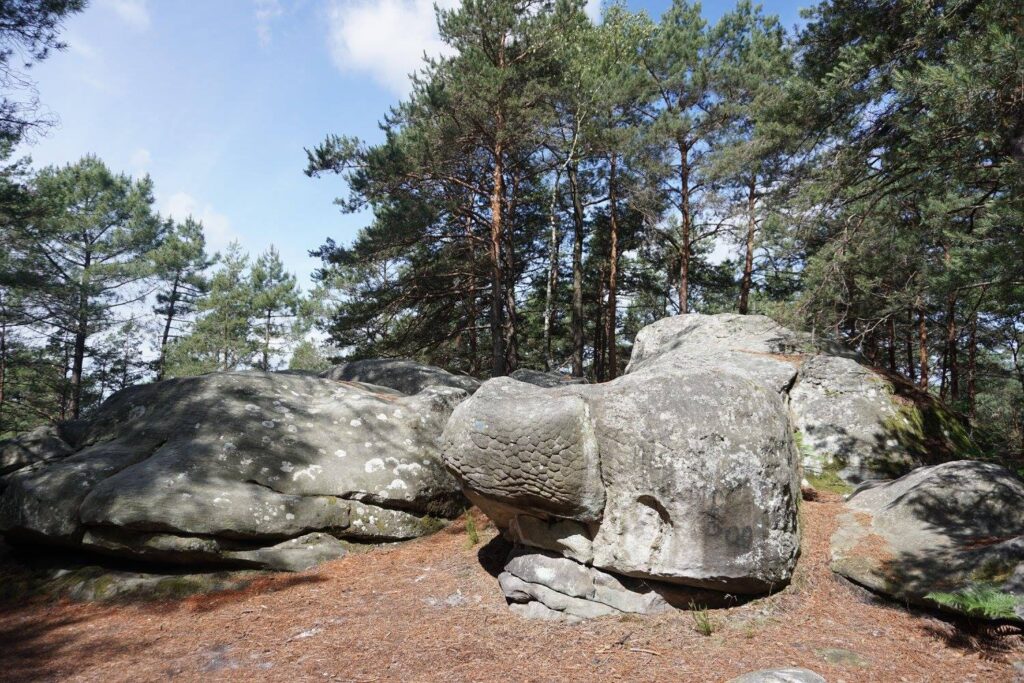
Stone blocks of Sharp Hill create a kind of miniature labyrinth.
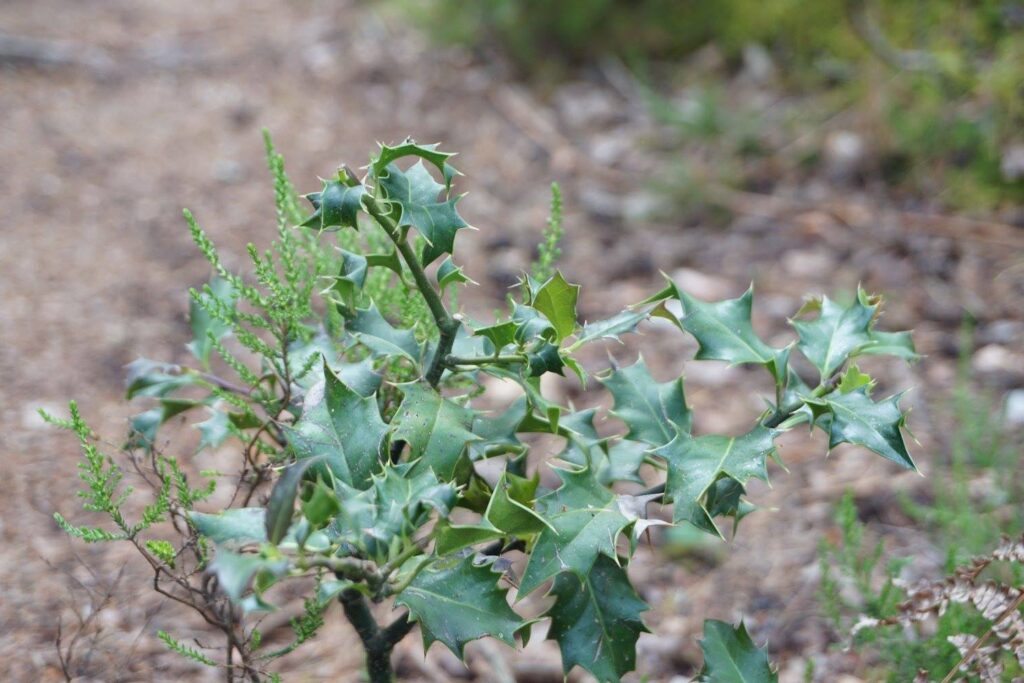
This woody plant bears a Latin name Ilex Aquifolium, commonly known as common holly, European holly or occasionally Christmas holly. Since pagan times this plant was considered holly, ‘’houx’’ referred to by French people. The plant is very resistant to winter and is evergreen with its berries surviving until late winter. Due to these characteristics it has been a symbol of eternity and persistency. In Christianity it is related to the birth of Jesus and is therefore often collected at Christmas time. In the bible it is said that King Herod ordered the massacre of all newborn children in Bethlehem in order to eliminate the newborn Jesus as well. To avoid this massacre, Mary and Joseph escaped with the baby to Egypt. According to folk legend, during the passage of the army, the family hid in this tree. Mary blessed the tree for saving them and wished it to always stay green. That’s exactly how this tree lives, its leaves never changes the green color or ever fall off.
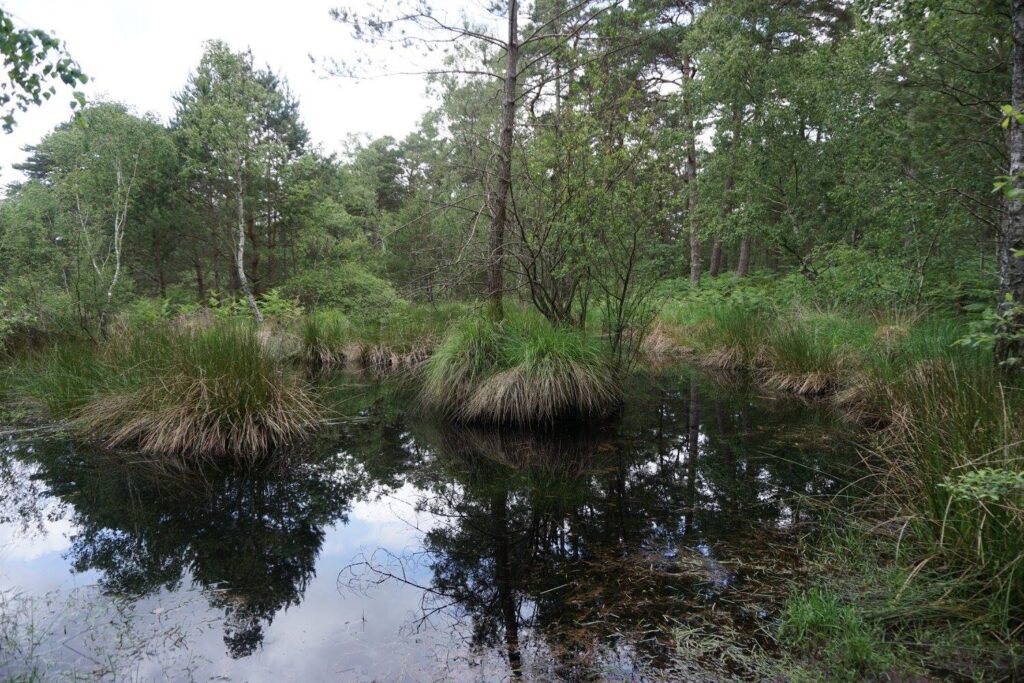
While passing through Forest of Fontainebleau we came across a large number of small ponds, called ‘’mare’’ in French. First pond on our route is ‘’Mare aux Pigeons” or the Pond of Pigeons. These ponds vary in size and can be from 5 to 30 meters in diameter and with rich vegetation. Some appear only after heavy rains and dry out during dry season.
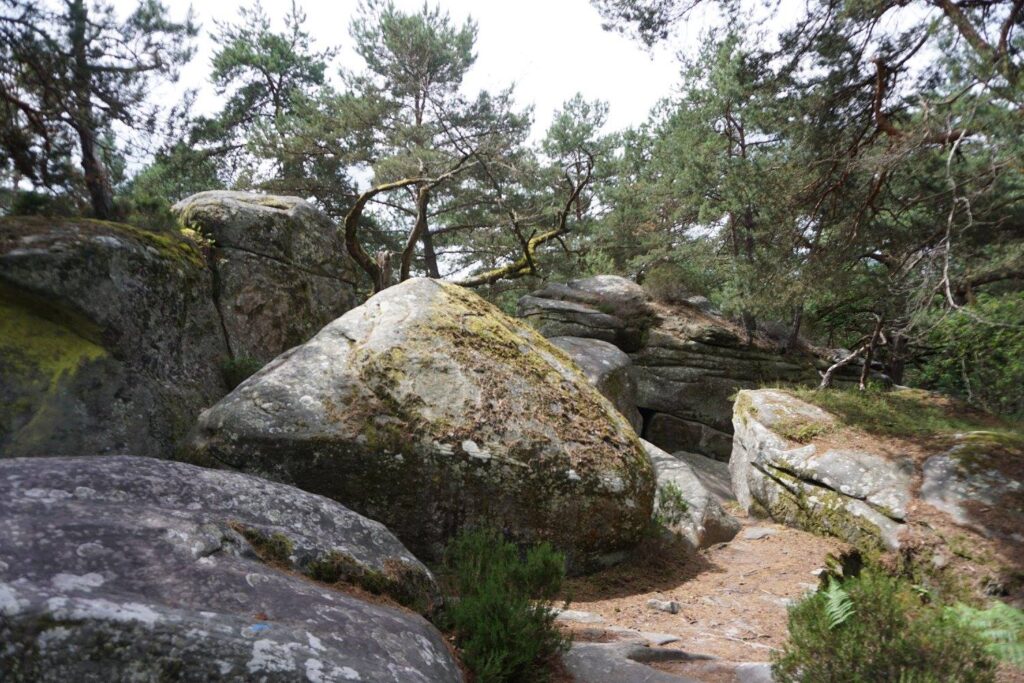
Next, after ‘’the Pond of Pigeons’’ we enter the first gorge, called ‘’Gorge de Franchard’’. Trail which passes through this gorge was built in 1847 by Klod Fransoa Denekur. For his lifetime, Denekur made a net of 150km trails within the Forest of Fontainebleau and marked it with blue color. He is considered to be the first forest’s guide and at the time his clients were rich Parisians. During the 17th century Gorge de Franchard was considered to be a place of horror which a man would not dare to enter. During 19th century things changed and it trail hiking and forest exploring became popular in France. Denekur invited and guided through the gorge the duchess Helene of Orleans and her two sons, Phillippe and Roberts. At the time the duchess has been a widow for five years already due to her husband, Ferdinand Phillipe, the oldest son of king Louis Phillippe, has tragically lost his life. In memorial to that one trail in this gorge Denekur has named « Le sentier de la Veuve » meaning « widow’s trail ». Each trail has a name and the name keeps memories of certain people, events or stories.
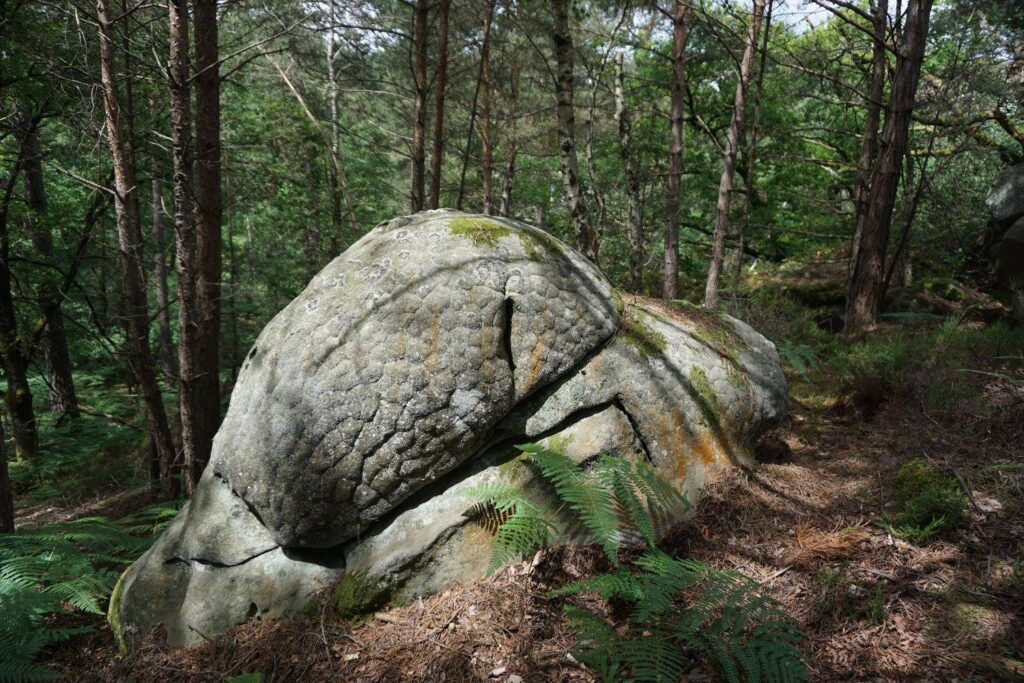
Gorge de Franchard is a home of many rocks with strange shapes. Some 30 million years ago during the Oligocene period, this area was under the sea. During that period the sea deposited sediments of sand fifty meters deep. During erosion, rocks in unusual shapes were created.

In the Franchard canyon the most attractive rocks are « Sphinx de Druides », meaning « Druids Sphinx »….
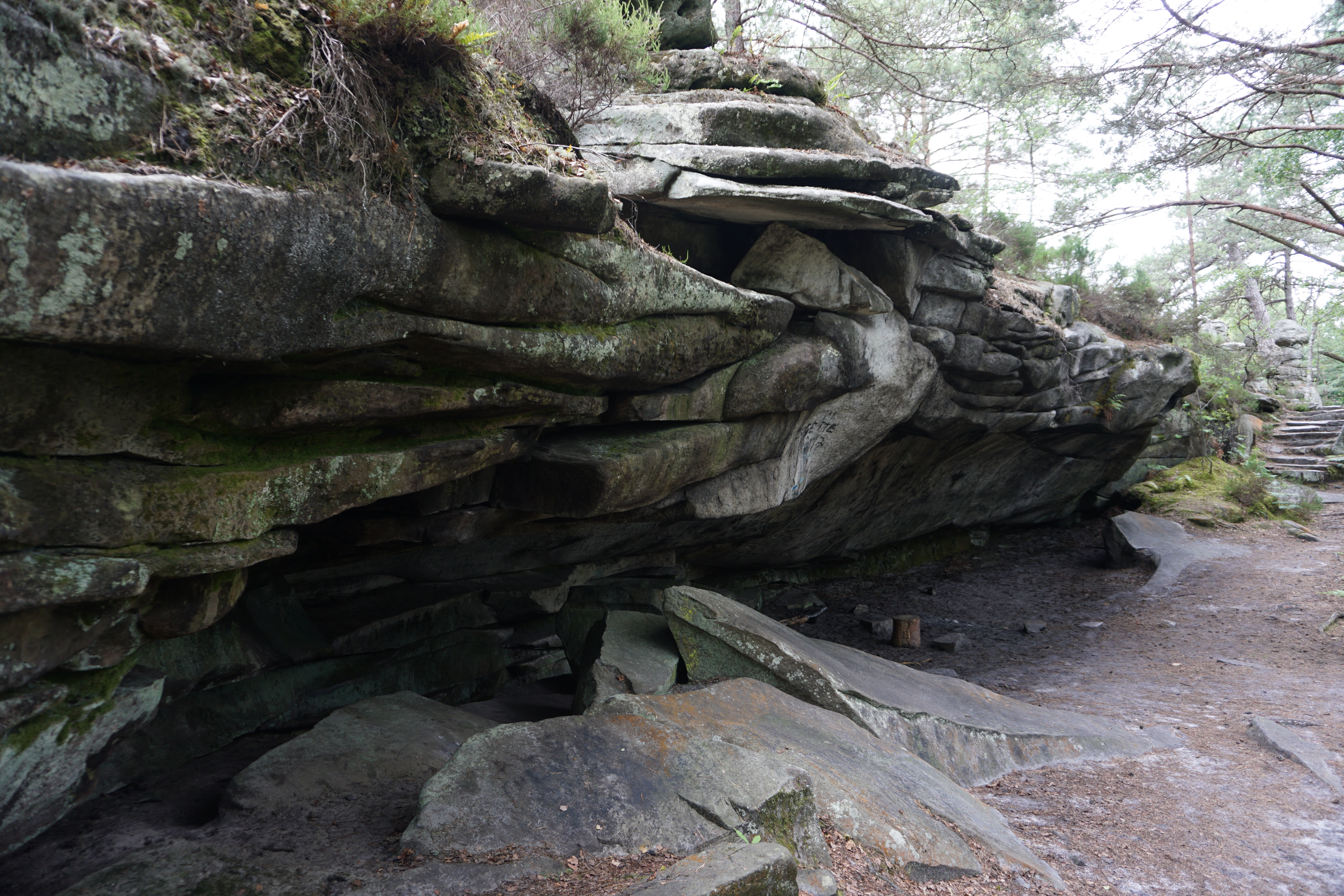
…. and “L’Antre de Druides” or “Druids shelter”. There is no connection or proof that these rocks were ever used by druids but local explores of the canyon during the 19th century came up with these names. “Druid Shelter” is one of favorite climbing practice playgrounds among alpinists.
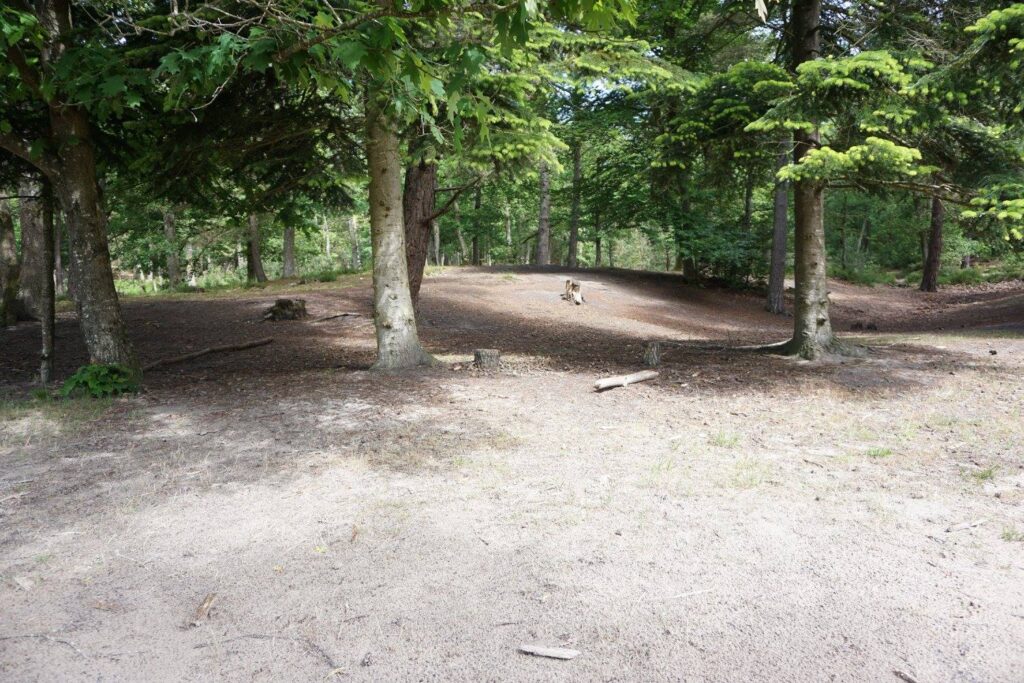
This white color sand can be seen at places. It is considered to be the cleanest type of sand and this type of sand was used to make famous Murano glass on the island of Murano in Venice. Even 98% of the Fontainebleau Forest ground makes sand.
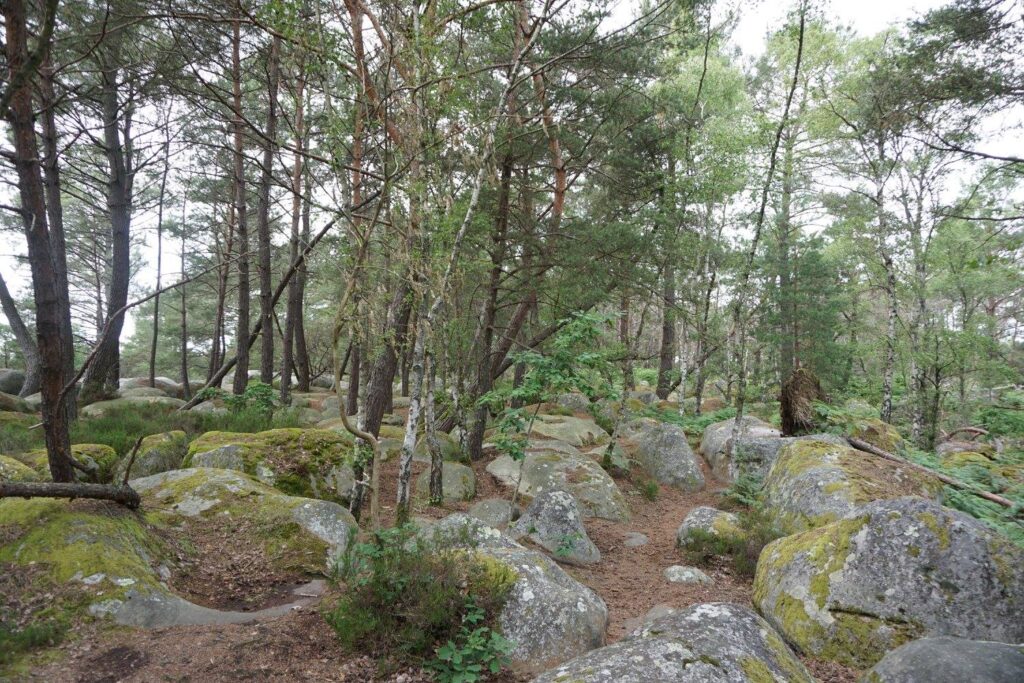
Next gorge is « Gorge D’Apremont ».
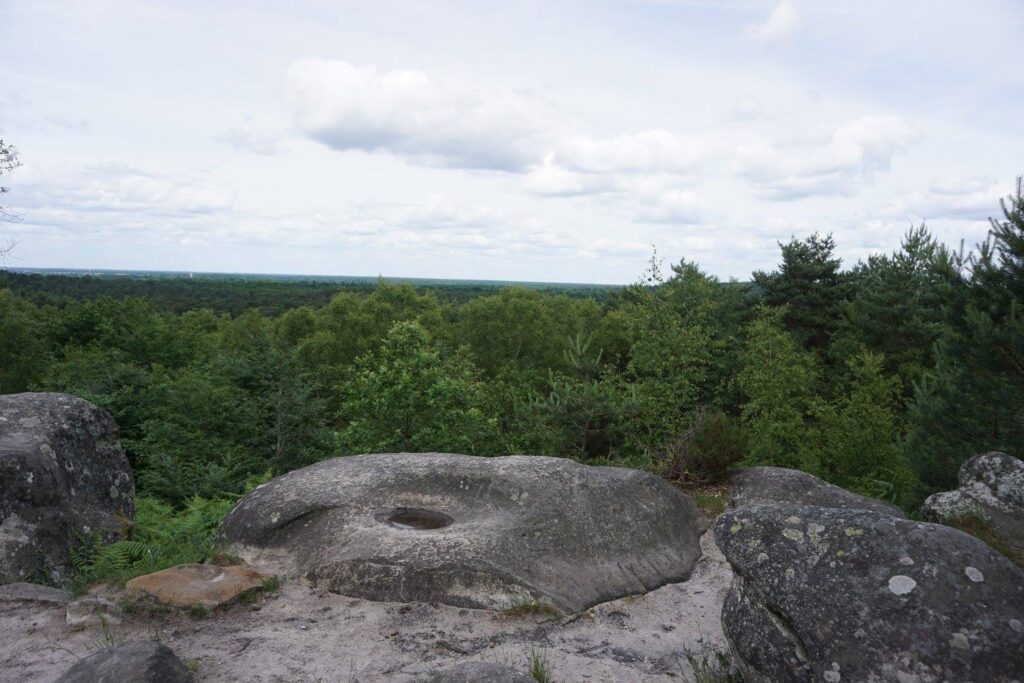
There is not that many elevated areas to make the view of the scenery and only a few reach more than 100m above sea level.

The most unusual rock on the trail is this one shaped like an elephant.

Once we left the « Gorge D’Apremont » behind us we enter the small village of Barbizon. It is also known as the village of artists because famous French painters Rousseau and Mie lived there in 19th century. Today, a large number of art studios and galleries exist in Barbizon. Barbizon is a popular tourist destination even among Parisians.
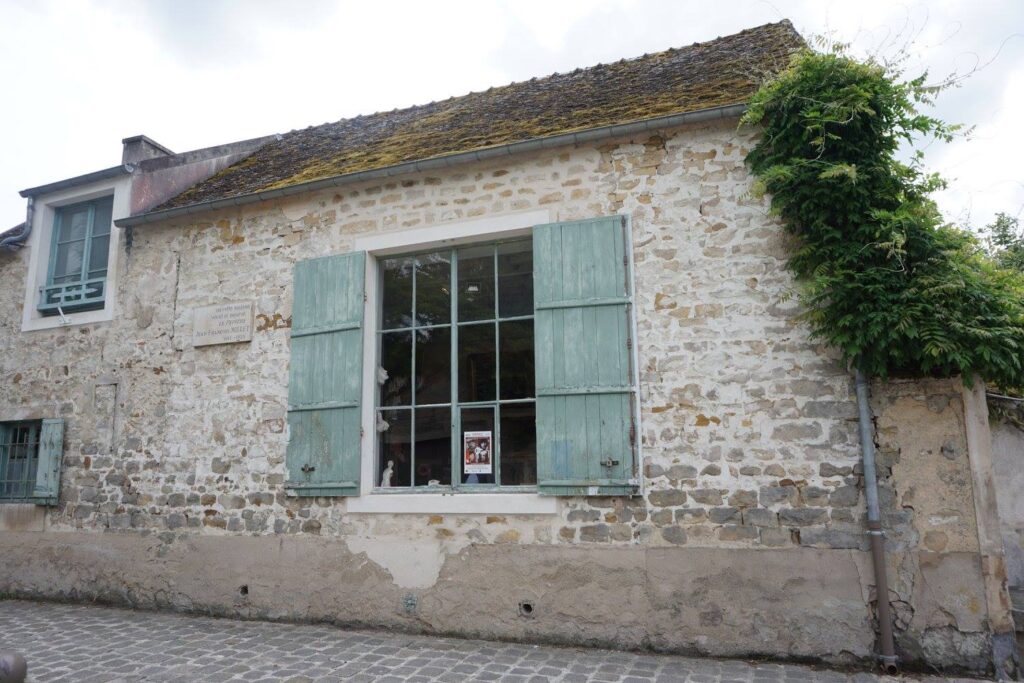
Today there is Millet’s studio in which this famous painter prom the Pre-Impressionist period has worked.
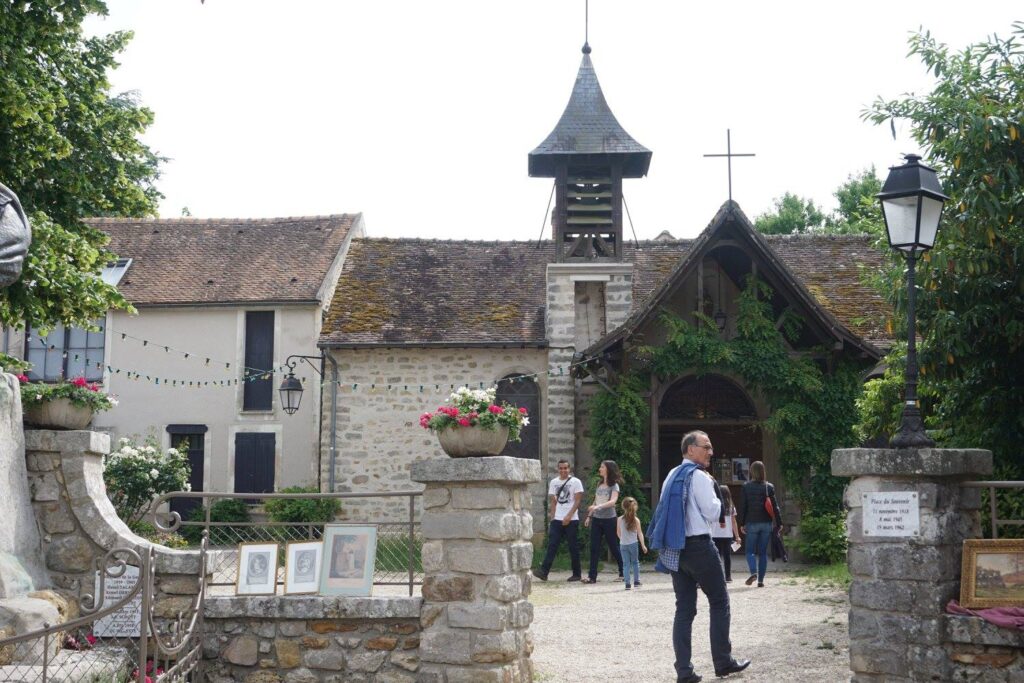
The church and the village preserved its 19th century architecture.
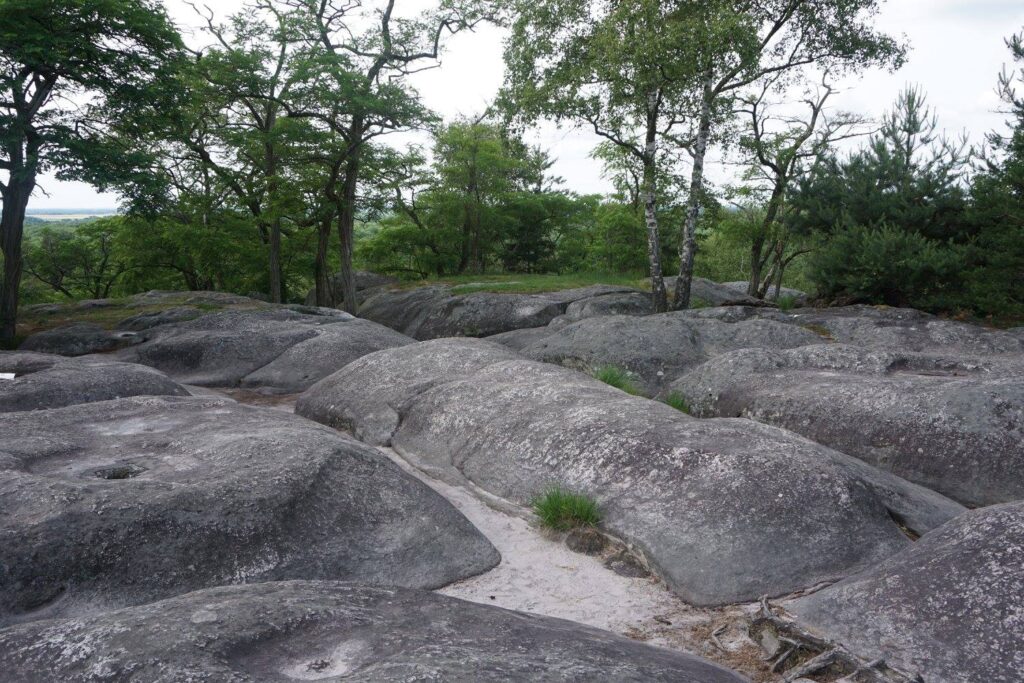
Continuing from Barbizon we enter the second part of gorge “Gorge D’Apremont”. We find these unusual rocks with sand.

At one point we come across this cave in the gorge, « Cavern des Brigands ». It was believed once that treasures of a well known gang from the time of Louis XV (18th century) was hidden in it. Translated to English it would meen « Bandit cave ». However this story was fabricated by Denekur in 1845, founder of many trails, in order to attract even more rich Parisian clientele. Not only did he made up the story but he actually hired diggers who dug the cave therefore it is manmade.

Near exit of the gorge we found this small pond called « Mare aux Biches » which means « pond of roe deer ».
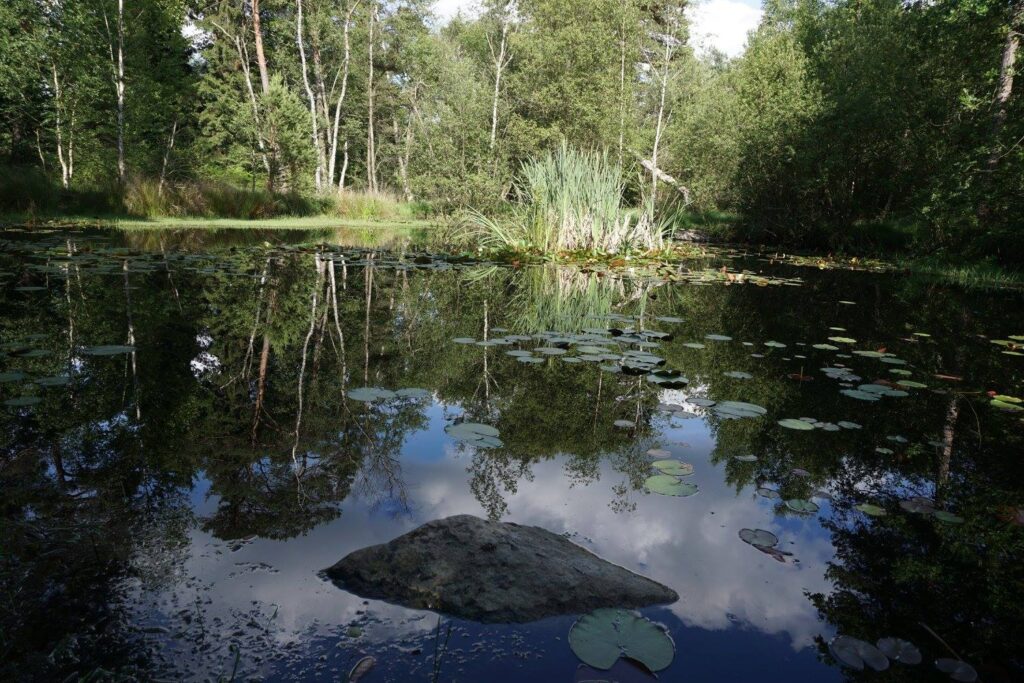
Soon after we exit the gorge and continued towards village Bois-le-Rois. On that way we came across the most beautiful pond « Mare à Piat ». It got its name after forest ranger Piat who was known for bad temper and anyone got into conflict with him would end up in the pond.
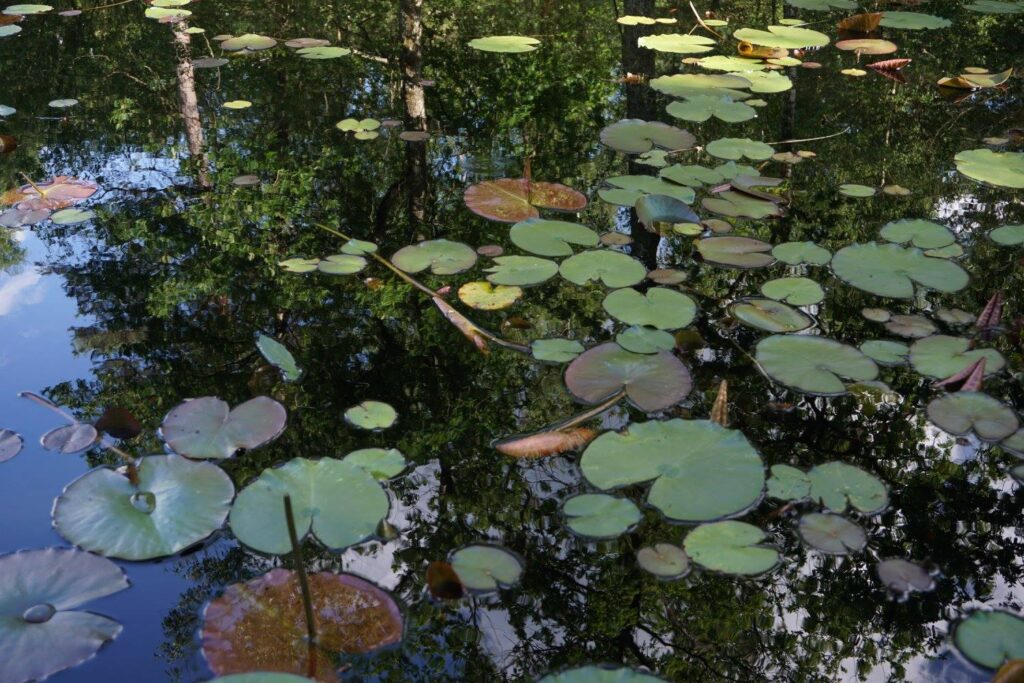
The pond is in the middle of the pine forest. Frog croak can be heard as they came for mating.
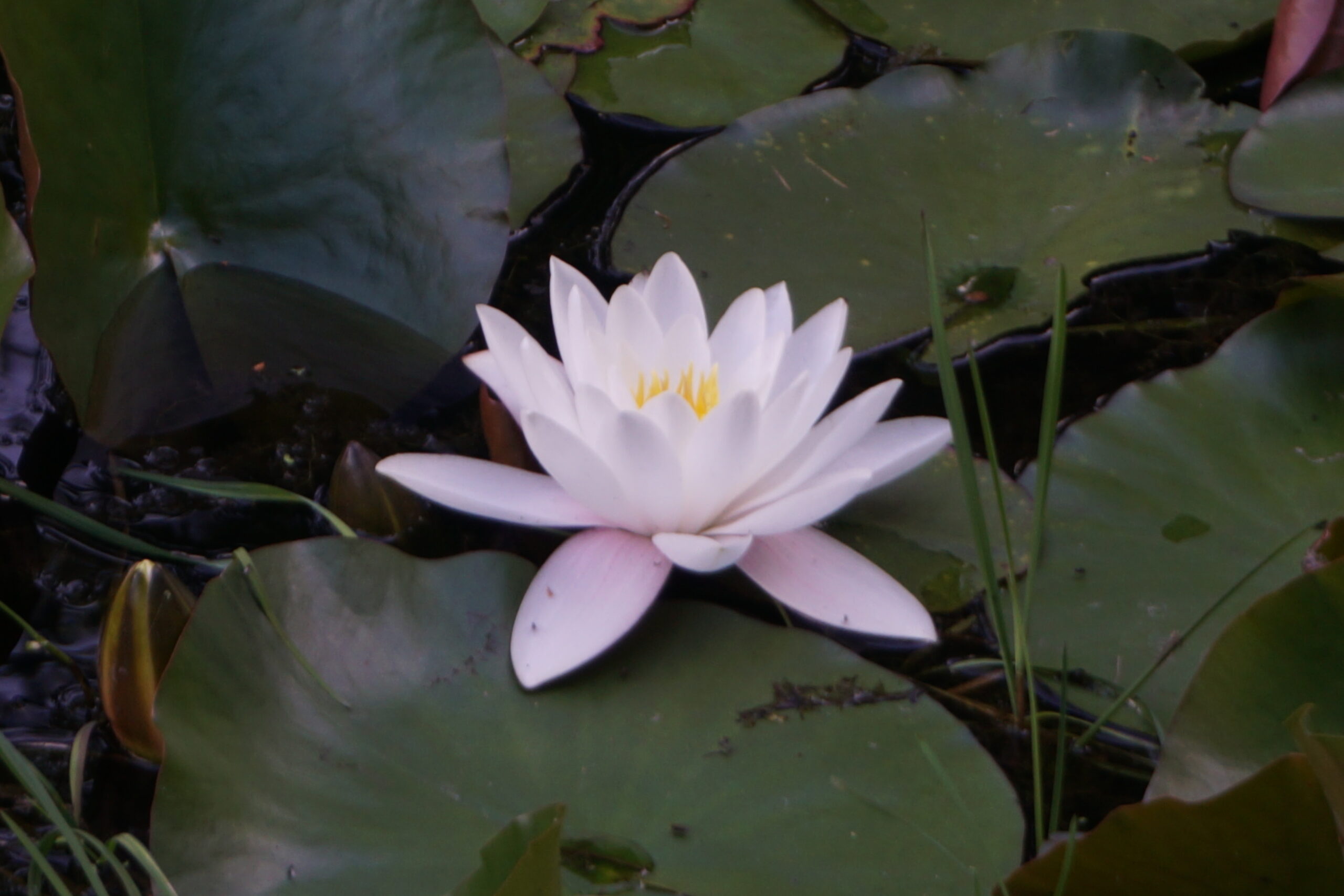
… and of course these flowers. This plant has a Latin name Nymphaea alba, better known as White Water-Lily or white nenuphar. Its roots is in the mud while leavs and flowers float on the water. Flowers open in the morning and stay opened until the noon only to close again.
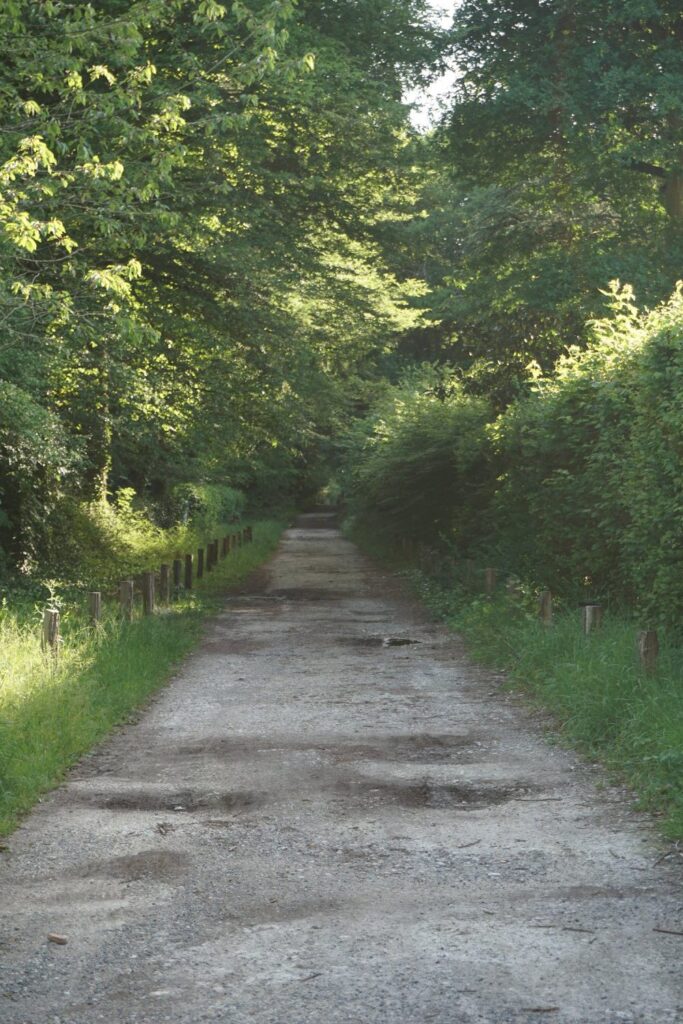
At this part of Fontainebleau we came across this road which existed since ancient Roman period. It is called « La route de Bourgogne » or « Burgundian road ». In 52.B.C. Ceasar’s general used this road with his four legions passing from town Agedincuma (today Sens), towards Metlosedum (Melun) and Lutecia (Paris). It was also used by french king Fransoa I while during his hunting expeditons, and Henry IV when ladies used it to follow hunters in their carriages. Travelers were often atacked by local robbers in these forests during 17th century.

« Fontaine Maria » is natural water spring named after miss Maria Colinet in 1891.
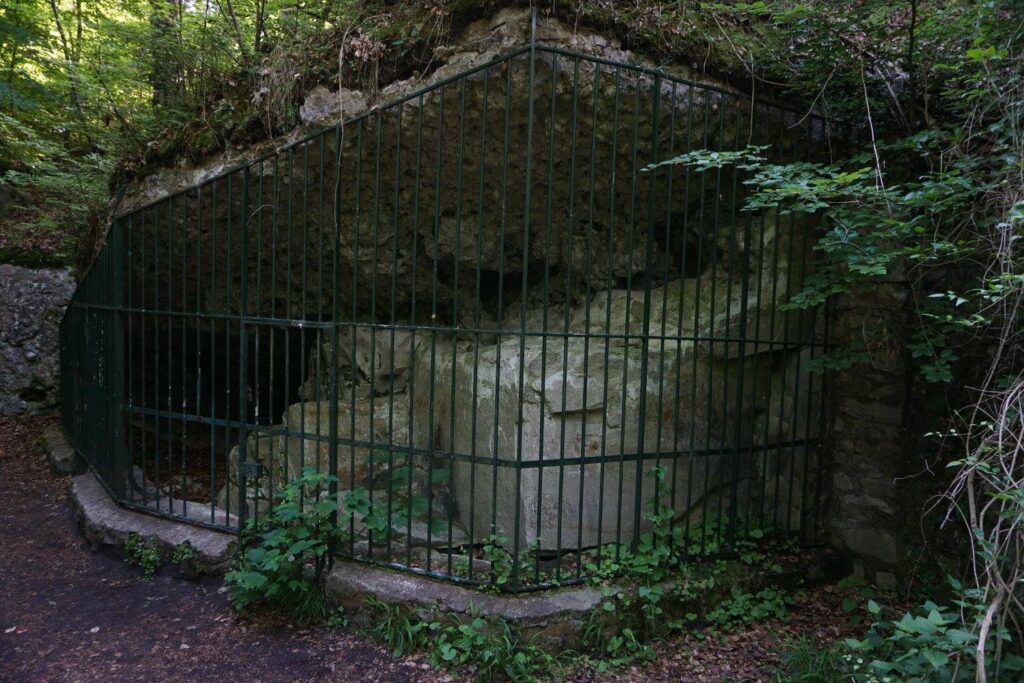
« Grote aux Cristaux » which translates as « the Crystal cave » was discovered in 1771 and was visited by the king Louis XVI himself during his staying in Fontainebleau Castle. The cave is fenced and closed for public since 1891 due to many of it’s crystals being destroyed by mass tourist visits that gained popularity since 1850.
THE END!!!
Check out another beautiful wonder of Île-de-France, Forest of Rambouillet.
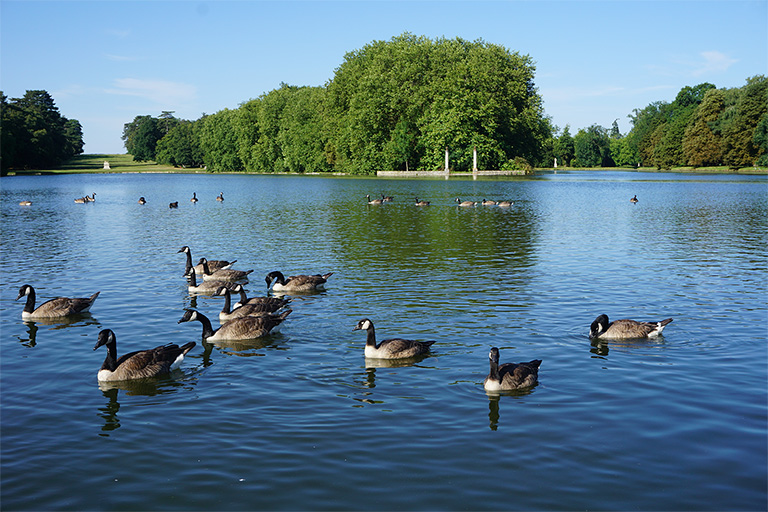
Rambouillet is located in Yveline department about 40 km from Paris. It is famous for its historical castle Château de Rambouil
Read More